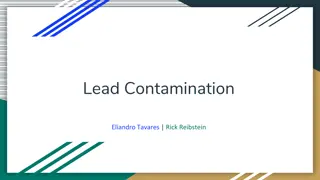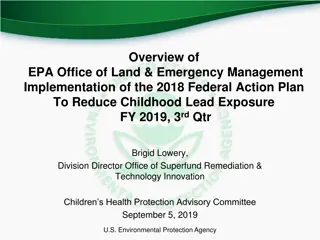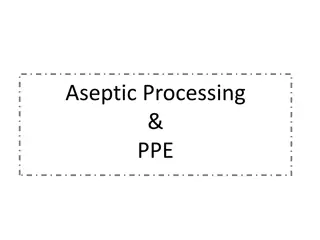Airborne Lead and Arsenic Contamination in Hayden, Arizona Study
Monitoring and analysis of airborne lead and arsenic contamination in Hayden, Arizona revealed significant levels of pollutants stemming from industrial activities. The study site at Hayden High School showed elevated lead deposition fluxes and surface dust contamination, posing potential health hazards to the community. Remediation efforts and data collection methods were outlined in the research findings.
Download Presentation

Please find below an Image/Link to download the presentation.
The content on the website is provided AS IS for your information and personal use only. It may not be sold, licensed, or shared on other websites without obtaining consent from the author. Download presentation by click this link. If you encounter any issues during the download, it is possible that the publisher has removed the file from their server.
E N D
Presentation Transcript
Airborne Lead & Arsenic in Hayden, AZ REMAN ALMUSAWI ARIZONA SPACE GRANT ARIZONA SPACE GRANT 2020 SYMPOSIUM 2020 SYMPOSIUM Acknowledgements: Dr. A.E. S ez, Dr. E.A. Betterton, T. Rodriguez-Chavez, K. P. Rine, R. F. O Brien-Metzger
Introduction Introduction C. SLAG DUMPS A. CRUSHING & GRINDING 2008 ASARCO installed controls on refining operation - overall lead emissions reduced by 50% Mandatory cleanups B. SMELTING D. WIND EROSION OF MINE TAILINGS 2014 Nonattainment designation by EPA for airborne lead 2015 $150 million settlement between US EPA and ASARCO LLC ASARCO mandated to install new equipment & pollution control technologies Source: Modified from (Csavina et al., 2012)
Study Site Study Site Hayden High School Hayden High School
Materials & Methods Materials & Methods Sample Preparation Laboratory Analysis o Inverted-disc samplers were installed at Hayden High School o o o 22 Inverted-Disc Samplers Diameter: 24 cm Surface area : 0.045 m2 o o 11 Surface wipe Samples Template surface area : 0.03 m2 o Extractions with 40 mL of Aqua Regia o Aliquot of 3.6 ml were diluted to 12 ml of D.I water o Samples were analyzed by The Arizona Laboratory for Emerging Contaminants (ALEC) Third Pass Second Pass First Pass Source: superfund.arizona.edu/personnel/trainees/tania-b-rodriguez
Source: superfund.arizona.edu/personnel/trainees/tania-b-rodriguez
Results: Inverted Disk Samplers Results: Inverted Disk Samplers Inverted-disc samplers (2/11/2019, 112 days) Inverted-disc samplers (2/11/2019, 112 days) Lead deposition fluxes ( g/m2 day) 1000 4 3.5 Dust Lead ( g/m2) 3 100 2.5 2 1.5 10 1 0.5 1 0 MOUDI Room Library West Wall Wolf Case Class Room Class Room 1304 Art Lab Admi Roof MOUDI Room Library West Wall Wolf Case Class Room Class Room 1304 Art Lab Admi Roof 1306 1306 Source from T. Rodriguez; unpublished data
Results: Surface Dust Results: Surface Dust Surface Dust Surface Dust Sample Collected: 1/17/2019 Sample Collected: 1/17/2019 1000 10000 1000 Dust Lead ( g/m2) Dust Arsenic ( g/m2) 100 100 10 10 1 Bookshelf RM 1304 Locker Locker # 1 Floor G Computer Window S. Library BS Book 1 Bookshelf RM 1304 Locker Locker # 1 Floor G Computer Window S. Library BS Book EPA Dust-Lead Hazard (Floors) (108 g/m2) EPA Dust-Lead Hazard (Window Sill)(1076 g/m2) Source from T. Rodriguez; unpublished data
Conclusions Conclusions Lead particles make it into the indoor environments settling with dust Previous studies show indoor particles to contain relatively elevated concentrations of lead. Lead Dust > 108 g/m2 EPA Dust-Lead Hazard Standard was violated
Dr. Eduardo Sez Dr. Eric Betterton Kyle Rine Ruby O Brien-Metzger Tania Rodriguez-Chavez Michelle Coe Thank You Thank You
References Csavina, J., Field, J., Taylor, M. P., Gao, S., Landazuri, A., Betterton, E. A., & S ez, A. E. (2012). A review on the importance of metals and metalloids in atmospheric dust and aerosol from mining operations. Science of the Total Environment, 433, 58-73.























